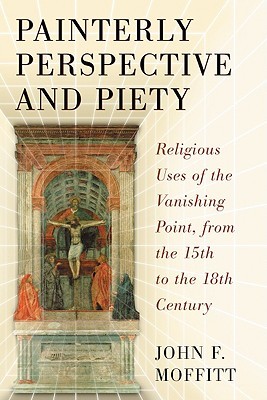
- We will send in 10–14 business days.
- Author: John F Moffitt
- Publisher: McFarland & Company
- ISBN-10: 0786435054
- ISBN-13: 9780786435050
- Format: 15.2 x 22.6 x 2.3 cm, softcover
- Language: English
- SAVE -10% with code: EXTRA
Reviews
Description
While the Renaissance is generally perceived to be a secular movement, the majority of large artworks executed in 15th century Italy were from ecclesiastical commissions. Because of the nature of primarily basilica-plan churches, a parishioner's view was directed by the diminishing parallel lines formed by the walls of the structure. Appearing to converge upon a mutual point, this resulted in an artistic phenomenon known as the vanishing point. As applied to ecclesiastical artwork, the Catholic Vanishing Point (CVP) was deliberately situated upon or aligned with a given object--such as the Eucharist wafer or Host, the head of Christ or the womb of the Virgin Mary--possessing great symbolic significance in Roman liturgy. Masaccio's fresco painting of the Trinity (circa 1427) in the Florentine church of Santa Maria Novella, analyzed in physical and symbolic detail, provides the first illustration of a consistently employed linear perspective within an ecclesiastical setting. Leonardo's Last Supper, Venaziano's St. Lucy Altarpiece, and Tome's Transparente illustrate the continuation of this use of liturgical perspective.
EXTRA 10 % discount with code: EXTRA
The promotion ends in 18d.23:22:29
The discount code is valid when purchasing from 10 €. Discounts do not stack.
- Author: John F Moffitt
- Publisher: McFarland & Company
- ISBN-10: 0786435054
- ISBN-13: 9780786435050
- Format: 15.2 x 22.6 x 2.3 cm, softcover
- Language: English English
While the Renaissance is generally perceived to be a secular movement, the majority of large artworks executed in 15th century Italy were from ecclesiastical commissions. Because of the nature of primarily basilica-plan churches, a parishioner's view was directed by the diminishing parallel lines formed by the walls of the structure. Appearing to converge upon a mutual point, this resulted in an artistic phenomenon known as the vanishing point. As applied to ecclesiastical artwork, the Catholic Vanishing Point (CVP) was deliberately situated upon or aligned with a given object--such as the Eucharist wafer or Host, the head of Christ or the womb of the Virgin Mary--possessing great symbolic significance in Roman liturgy. Masaccio's fresco painting of the Trinity (circa 1427) in the Florentine church of Santa Maria Novella, analyzed in physical and symbolic detail, provides the first illustration of a consistently employed linear perspective within an ecclesiastical setting. Leonardo's Last Supper, Venaziano's St. Lucy Altarpiece, and Tome's Transparente illustrate the continuation of this use of liturgical perspective.


Reviews